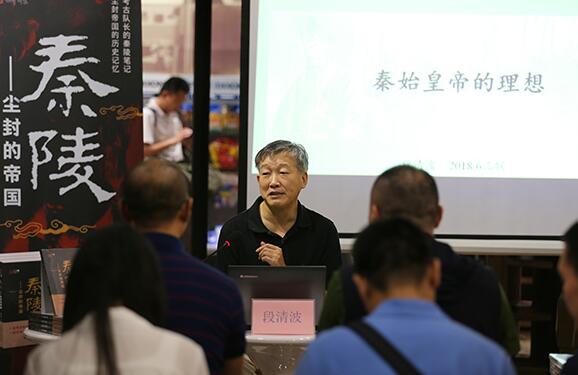Notorious emperor was vilified, series claims
Was emperor Qin Shihuang a villain or a hero? Or something-or someone-in between?
The man who united China under centralized rule and was interred with the Terracotta Warriors is largely known for his brutality, autocracy, opulence and lust for power.

Archaeologist Duan Qingbo [Photo provided to China Daily]
But archaeologist Duan Qingbo, who led the excavation of his mausoleum, says there's much more to the Qin Dynasty's (221-206 BC) founder in his new book and upcoming TV series.
"Qin Shihuang is a great emperor in Chinese history. He had extraordinary ideals and passion," the professor said at the recent launch of his new book, Qin Mausoleum: A Dust-Laden Empire, in Beijing.
The book uses historical research to elaborate on Qin Shihuang's legacy. It explores some of the discoveries from his mausoleum to reveal a more complex side to his character.
Duan led the excavation team for a decade.
This, in turn, led him to believe the emperor has largely been "demonized".
The mausoleum's opulence resembles the palace of the Qin's imperial capital of Xianyang, which lies outside today's Xi'an in Shaanxi province.
Duan believes this indicates the emperor hoped to continue his ambitions to build the nation in the afterlife.
"The tomb suggests more than posthumous lavishness. It embodies his aspirations to unify China after his passing," he says.
Qin Shihuang was known for large-scale constructions, such as the Epang Palace.
"Epang was never finished. Only a rammed-soil foundation was completed. So, it's a myth that the palace was luxuriant," Duan says.
Duan refutes the notion that bloodiness and cruelty were Qin Shihuang's hallmarks.

Qin Mausoleum: A Dust-Laden Empire by archaeologist Duan Qingbo [Photo provided to China Daily]
He points out some statues buried alongside the Terracotta Warriors are acrobats rather than soldiers.
"Qin Shihuang was lonely in life. Nobody around him matched his insight and vision. He has become a caricature in death. People don't understand him," he says.
"We must remember this emperor devoted his life to designing a social-governance system that has profoundly shaped Chinese history for over 2,000 years. That makes him a great emperor. It's a pity we one-sidedly condemn him without acknowledging his philosophy and contributions."
Duan believes his tyrannical image is largely conjured by Western Han Dynasty (206 BC-AD 24) literature. They criticized previous rulers to justify their overthrow and win public support.
The scholar speculates later chroniclers of history, such as Sima Qian, deliberately turned Qin Shihuang into a cautionary fable for later rulers, consequently contributing to his bad reputation.
He points out many dynasties' final emperors, as in the case of Qin Shihuang as a founder, became notorious despite their grand achievements.
Sui Dynasty (581-618) emperor Yang Guang is a typical case. He built the Grand Canal that stretches thousands of kilometers from East China's Hangzhou to Beijing which helped to transform the nation.
The UNESCO-recognized engineering marvel still operates today with many of its superlatives yet unmatched.
But Yang's role has been downplayed for reasons like those for Qin Shihuang's, Duan says.
Yang is often thought of as a character whose excesses and bumbling brought down the Sui.
Duan's CCTV-12 series about Qin Shihuang and his mausoleum will air from June 17 to July 2.
"We often see Qin Shihuang in literature," says associate director of CCTV-12, Quan Yong.
"But archaeology gives us a different angle from which to view him."

